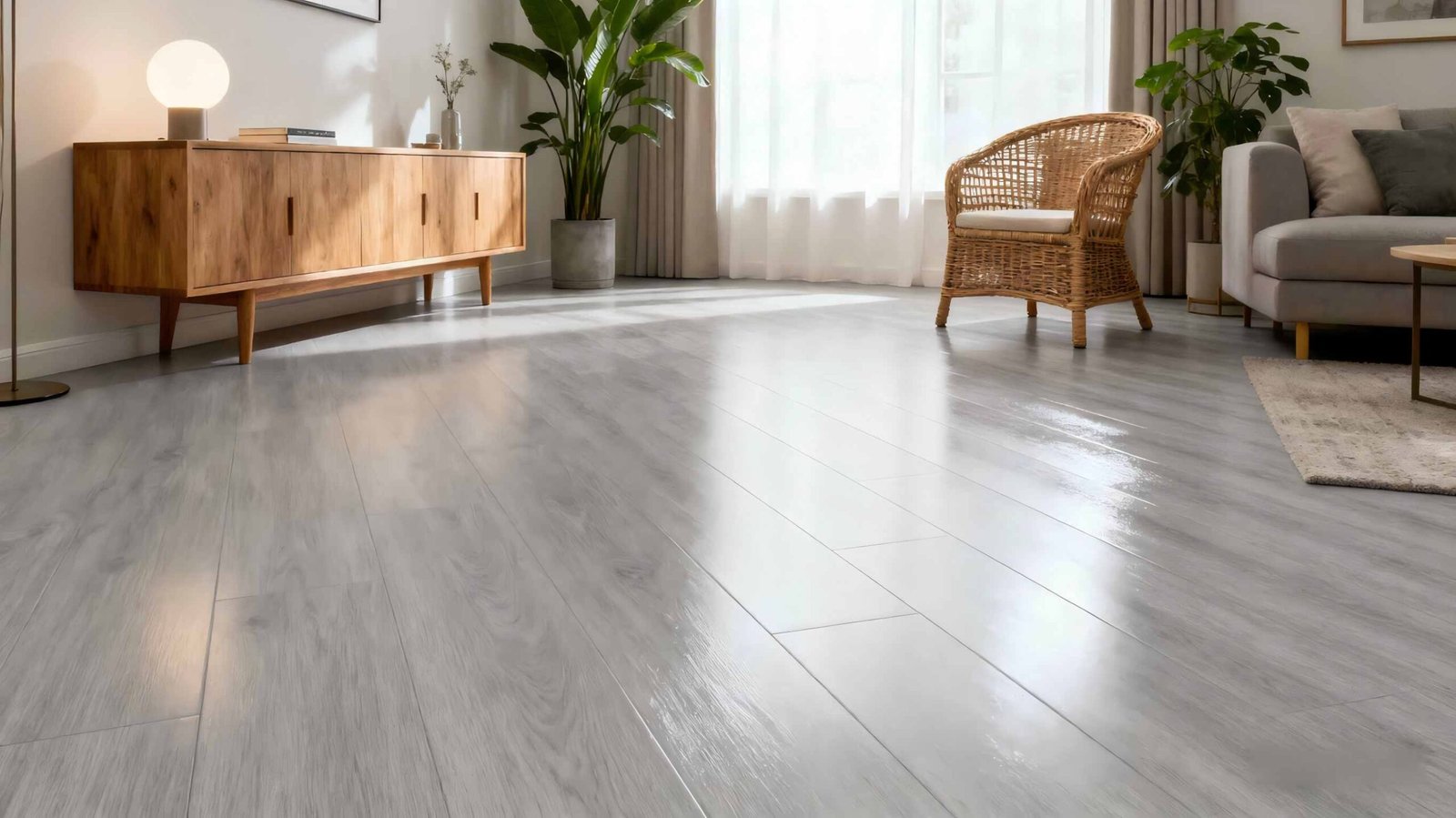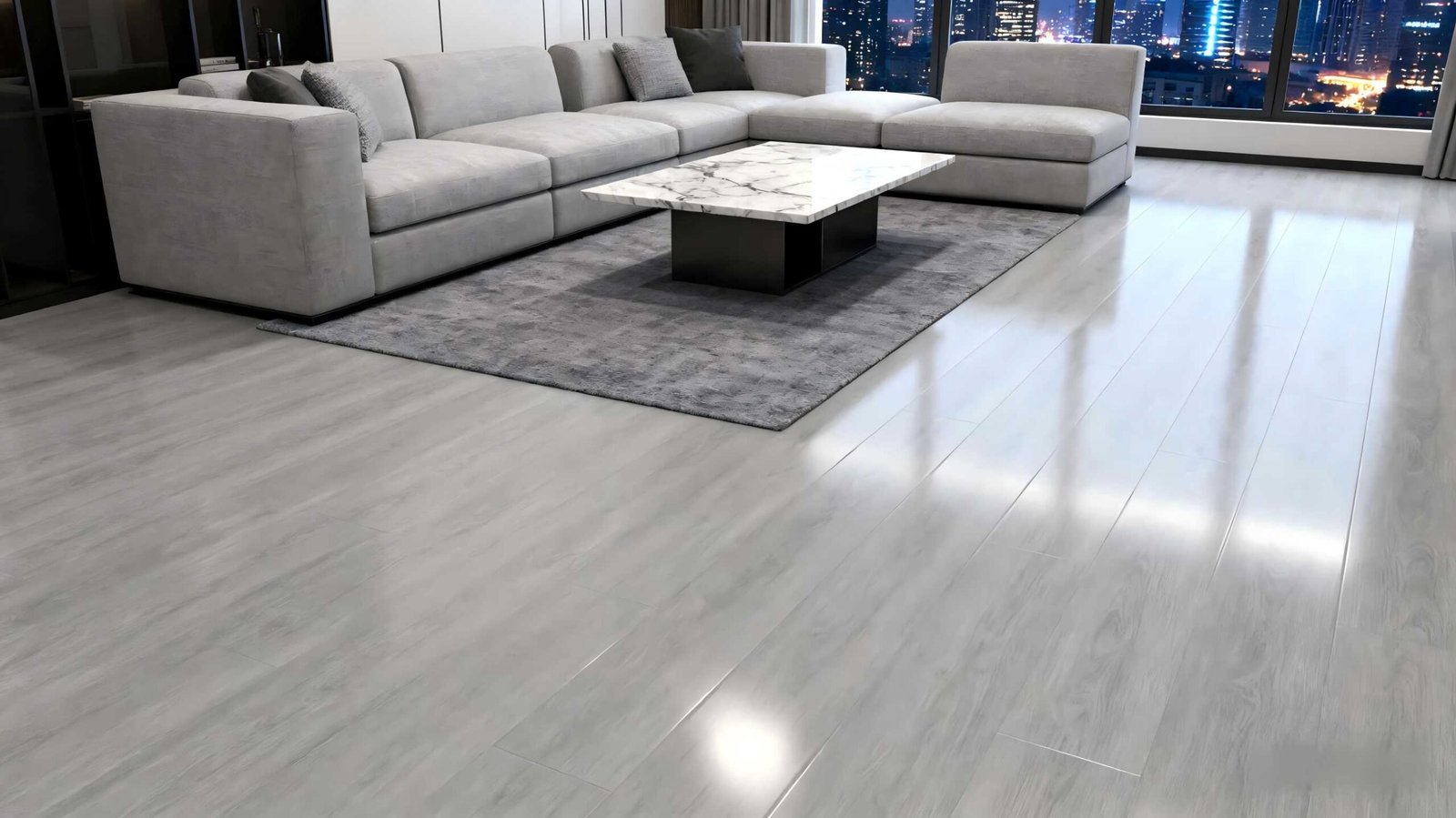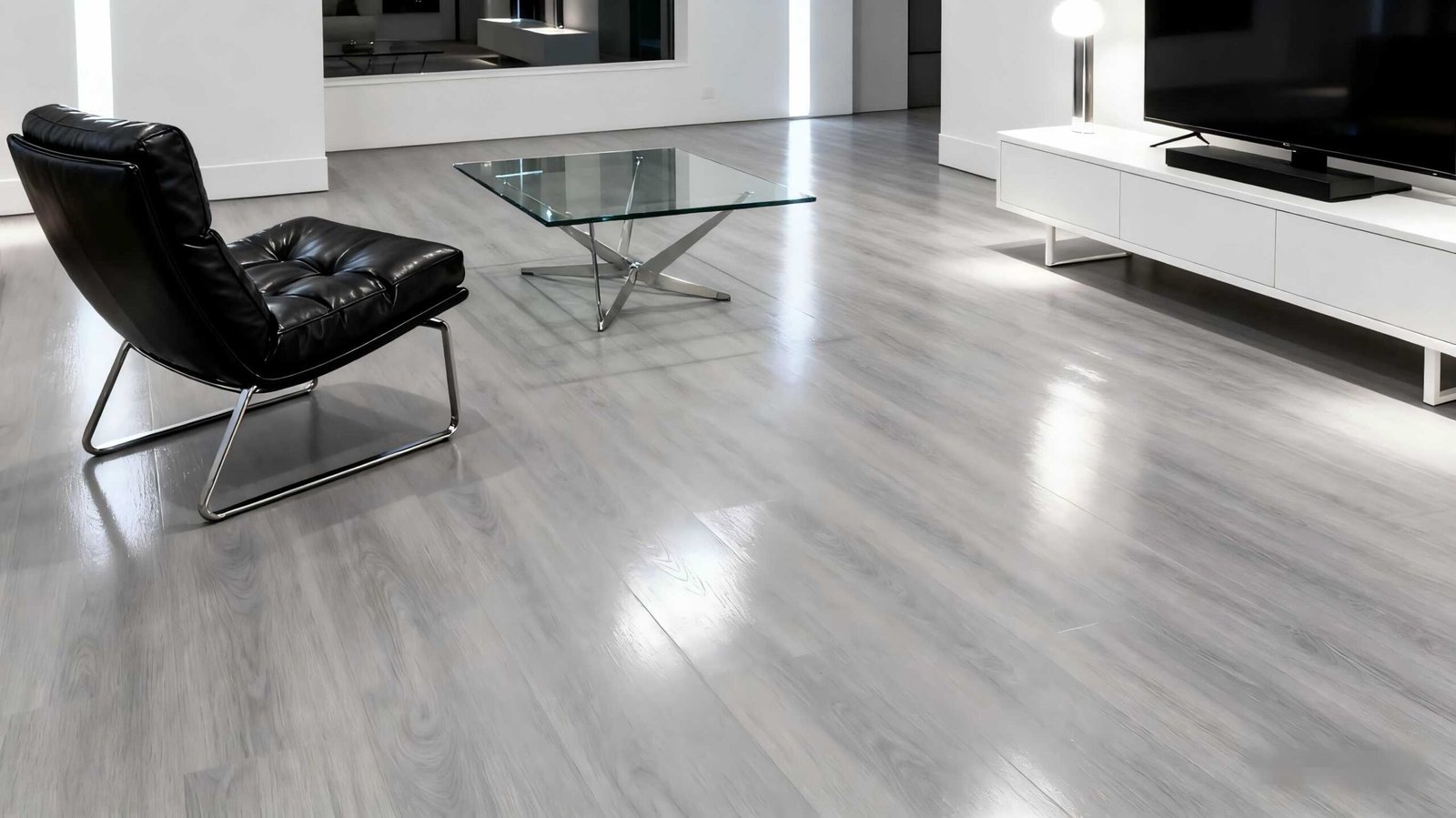
Planning a home makeover or sprucing up a commercial space? You’ve probably stumbled across SPC flooring as a top contender. Stone Plastic Composite, or SPC, is tough, stylish, and fully waterproof—perfect for busy households or high-traffic offices. But let’s be honest: figuring out costs in 2025 can feel like wading through quicksand, with prices shifting due to supply chain hiccups and stricter eco-regulations. This guide cuts through the clutter, diving deep into the 2025 guide to SPC flooring costs and how to budget smart for materials and installation. We’ll keep it real, sharing practical tips and real-life examples to help you nail your project without draining your wallet.
I remember helping a friend redo her coffee shop floor last spring after a pipe burst wrecked the old one. She picked SPC, and it not only held up to spills but also came in under budget once we crunched the numbers. That’s the vibe we’re going for here—clear, actionable advice grounded in reality.
Why SPC Flooring Rocks for 2025 Projects

SPC flooring isn’t just a passing fad. It’s built to last in spaces where wood warps or laminate fails. Made from limestone powder, PVC resins, and stabilizers, it skips glue-heavy processes, avoiding formaldehyde entirely. That’s a big win for families with kids or anyone chasing a healthier home.
In 2025, SPC’s popularity is set to soar. Greener building codes and a push for low-maintenance floors make it a standout. It’s 100% waterproof, fire-resistant up to B1 level, and quiets noise with add-ons like IXPE underlay. Material costs typically range from $2 to $5 per square foot, but we’ll dig into that soon. The real perk? SPC’s click-lock system cuts installation time, saving you cash on labor.
Here’s the deal: SPC nails high-end looks without the hassle. Think oak planks that fool even picky guests, perfect for basements or bustling lobbies. It’s not flawless—nothing is—but with budgets squeezed by inflation in 2025, it’s a solid choice.
Tough as Nails: Handles heavy foot traffic and resists scratches.
Waterproof Wonder: Spills in kitchens or bathrooms? No problem.
Eco-Friendly Edge: Zero formaldehyde means safer air quality.
Easy Install: Click-lock systems make setup a breeze, even for DIYers.
I’ll admit, I got hooked on SPC after seeing it transform a friend’s damp basement into a cozy den. It’s practical but feels luxe—a rare combo.
What Drives SPC Flooring Costs in 2025?
Costs don’t just pop up out of nowhere. Material prices have settled since the pandemic, but 2025 brings new twists. Sustainable sourcing rules are pushing up limestone and PVC costs. Plus, shipping from places like China—a hub for quality SPC—can bump your quote.
Your location matters too. Urban installs, say in Chicago, might add 20-30% to labor costs due to tight spaces or parking woes. Rural areas? Usually cheaper. And don’t sleep on design choices. Basic wood grain is wallet-friendly, while fancy marble or herringbone patterns cost more.
Eco-standards play a role. Certifications like FloorScore or ISO9001 mean pricier SPC upfront, but it holds 15-20% better resale value over five years, per industry reports. I saw this firsthand when a client flipped a condo—certified SPC boosted the sale price. Humidity’s another factor. In places like Miami, skipping waterproof SPC can lead to costly repairs, sometimes 50% over budget.
Labor shortages in 2025 aren’t helping. Skilled installers are hard to find, driving rates up. Plan ahead to dodge surprises.
Material Costs: What You’re Actually Buying
Let’s break down the materials. SPC comes in 4mm to 6.5mm thicknesses, with wear layers from 0.2-0.7mm for scratch protection. Thinner planks work for quiet homes; thicker ones take a beating in shops or offices.
Here’s a 2025 cost snapshot for standard 7-inch planks (per square foot, no tax or shipping):
Thickness Wear Layer Style Example Avg. Cost (2025 Est.) Best For
4mm 0.2mm Simple Wood Grain $2.00 – $2.50 Bedrooms, quiet homes
5mm 0.3mm Oak or Walnut Look $2.50 – $3.50 Kitchens, living rooms
6mm 0.5mm Marble or Herringbone $3.50 – $4.50 Offices, basements
6.5mm 0.7mm Premium Parquet $4.00 – $5.00 High-end spaces, lobbies
These numbers reflect a 5-10% jump from 2024, thanks to eco-friendly additives like recycled PVC. Buying in bulk—say, 1,000 sq ft—can trim 15% off. Accessories like T-molding or skirting? They add $0.50-$1 per linear foot. For a 200 sq ft room, that’s $100-$200 extra, but they make transitions look sharp.
I once quoted a client for 5mm SPC in a pecan finish. They balked at $3 per square foot until we compared it to laminate’s 10-year lifespan versus SPC’s 20+. That sealed the deal.
Installation Costs: DIY or Hire a Pro?
Installation can make or break your budget. SPC’s click-lock systems (like Unilin or Valinge) are DIY-friendly, but pros get it perfect, especially on wonky subfloors.
In 2025, pro installs run $1.50-$3.50 per square foot. Simple jobs hit the low end; tricky ones with stairs or leveling creep to $3.50. For 500 sq ft, expect $750-$1,750. Removing old flooring? Add $1-$2 per square foot.
Going DIY? You’ll need tools—a utility knife, spacers—costing $50-$100. Time? A weekend for newbies. But mess up the cuts, and fixes can hit $500. I know a guy who saved $1,000 DIYing his garage, but only after practicing on scraps. Pro tip: let planks sit 48 hours before installing to avoid warping, especially in humid spring weather.
Budget 30-50% of material costs for installation. With labor rates climbing 7% annually in 2025, lock in quotes early. Some suppliers bundle install services—ask about it.
Sneaky Costs That Can Trip You Up
Subfloor Fixes: Uneven concrete needs leveling, adding $0.75-$1.50 per square foot. Skip it, and your floor might bubble.
Underlayment: IXPE or EVA foam costs $0.20-$0.50 per square foot for noise control—key for apartments.
Waste Factor: Order 10% extra for cuts. Odd-shaped rooms eat more.
Permits: Rare for homes, but commercial jobs might need $200 for inspections.
A buddy in Texas got hit with $300 for moisture barriers due to shifting clay soil. Always check your site’s quirks.
Budgeting Tips to Nail Your 2025 SPC Project
Smart budgeting starts with planning. Measure your space twice and sketch the layout. Online calculators are handy, but plug in local labor rates for accuracy.
Here’s how to keep costs in check:
Set a Clear Budget: Aim for 50-60% on materials, 30-40% on labor, and 10% for extras. For a $5,000 budget on 400 sq ft, that’s $2,500 for planks, $1,500 for install.
Shop Smart: Look for 2025 end-of-year sales—Black Friday can cut 10-20%. Bulk orders save more.
Customize Wisely: Suppliers with OEM options let you tweak designs without crazy markups.
Think Long-Term: SPC’s thermal conductivity works great with radiant heating, trimming utility bills by 15%.
Explore Financing: Some pros offer payment plans. Check for green rebates on certified floors.
Phasing projects helps too. Start with one room, live with it, then expand. It keeps cash flow manageable. I saw this work for a family who did their kitchen first, loved the SPC, then floored the whole house.
Random thought: remember when laminate prices spiked due to wood shortages? SPC sidestepped that chaos, proving it’s a reliable pick. Back to budgeting—use a spreadsheet to track every penny. It’s a lifesaver.
Why Lanhe Flooring Is Your Go-To for SPC

Quality matters when picking SPC. Lanhe Flooring, based in Shandong, delivers top-notch SPC with a focus on durability and style. Their automated production lines handle everything from limestone blends to UV-coated finishes, ensuring consistent, formaldehyde-free planks.
Lanhe’s got the credentials: ISO9001, SGS testing, and FloorScore certifications mean they meet global standards. Their lineup includes 4-6.5mm thicknesses in wood grains, marbles, and parquet—great for tailoring to your space. They export to North America, Europe, Australia, and more, with factory-direct pricing that keeps costs low.
What makes them special? A 24/7 customer service team ready to answer questions, plus strict quality checks from raw materials to pallet-packed shipping. No dents or dings on delivery. For your 2025 budget, Lanhe’s eco-conscious, reliable approach makes them a solid partner for floors that last.
Conclusion: Wrapping Up Your 2025 SPC Flooring Budget
There you go—a practical guide to mastering SPC flooring costs in 2025. From materials to installation, we’ve covered the bases so you can plan confidently. Whether you’re revamping a cozy home or a busy office, smart budgeting turns challenges into wins. Get those quotes, measure carefully, and step into a stylish, durable space without the stress.
Frequently Asked Questions
What’s the average cost for SPC flooring in the 2025 guide?
Per the 2025 guide to SPC flooring costs, materials run $2-$5 per square foot based on thickness and design. Installation adds $1.50-$3.50 per square foot. A 300 sq ft project might cost $1,050-$2,550 total, depending on your area and extras like underlayment.
How do I budget for materials and installation in the 2025 guide to SPC flooring costs?
For the 2025 guide, allocate 50-60% for materials (around $3/sq ft), 30-40% for labor, and 10% for surprises like waste. Use a room calculator, get multiple quotes, and buy in bulk to save. It keeps your project on track.
Can I save money without cutting corners in the 2025 guide?
Yes! The 2025 guide to SPC flooring costs suggests DIY for simple rooms, hitting seasonal sales, or choosing mid-range 5mm planks. Suppliers with factory-direct deals, like those offering customizable SPC, help balance quality and price.
What affects installation costs most in the 2025 guide to SPC flooring costs?
Subfloor issues and room complexity drive costs, per the 2025 guide. Leveling uneven floors adds $1/sq ft, while stairs or patterns push labor to $3.50/sq ft. Hiring pros ensures click-locks stay tight, avoiding pricey fixes.
Is SPC flooring a good investment in the 2025 guide to SPC flooring costs?
Definitely. The 2025 guide shows SPC’s durability and waterproofing outlast competitors, saving on repairs. Budgeting for materials and installation upfront pays off with 15-20 years of use, plus eco-certifications that boost home value.


